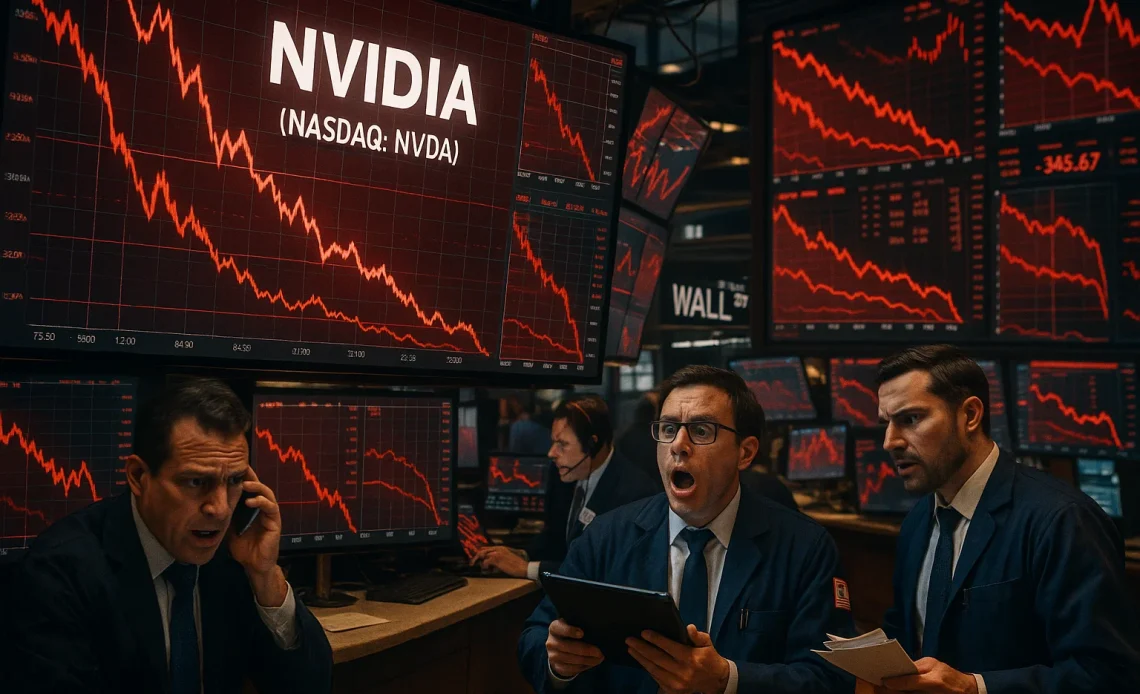Nvidia stock (NASDAQ: NVDA) slipped over 3% today as traders engaged in profit-taking and wrestled with lingering questions about artificial intelligence valuations.
The pullback was sparked by headlines of SoftBank dumping its entire $5.83 billion Nvidia stake in October, a move designed to fund CEO Masayoshi Son’s aggressive pivot toward alternative AI infrastructure bets like OpenAI and the Stargate data center project.
The selling hit just as Nvidia’s towering $4.6 trillion market cap invited scrutiny about whether the stock’s premium pricing has room to run further.
Yet beneath today’s weakness lies a fascinating contradiction: Wall Street analysts are simultaneously raising price targets while the market turns cautious.
The median analyst target sits around $230, but targets are wildly scattered across a $250 range, from $100 on the low end to $350 on the high, reflecting deep disagreement about Nvidia’s destiny as AI competition intensifies and regulations loom.
The bull case keeps getting bolder despite the slide
Don’t tell Oppenheimer analyst Rick Schafer about today’s selling pressure. He just raised his price target from $225 to $265, signaling that Nvidia’s recent weakness is a buying opportunity for long-term believers.
Schafer’s rationale is straightforward: Nvidia will continue to beat estimates while riding the wave of robust AI hardware demand over the next 12-15 months.
His upgraded target implies 40% upside from today’s price.
Susquehanna analyst Christopher Rolland agrees, lifting his target to roughly $230 on the conviction that sustained AI-driven revenue momentum and strong forward guidance will fuel the next leg higher.
These aren’t isolated opinions.
Loop Capital analyst Ananda Barush sports the street’s highest target at a whopping $350, betting that Nvidia’s dominance and the sheer scale of AI infrastructure spending will reward patient shareholders.
What ties these optimists together is a belief that current weakness is temporary, a chance for holders to add to positions before the company reports Q3 earnings on November 19th.
Nvidia’s guidance of $54 billion in revenue (plus or minus 2%) would crush consensus expectations.
If the company delivers on that and provides upbeat forward guidance, the stock could easily rebound past $200 and punch toward new highs in the final quarter of 2025.
The cautious crowd is waving warning flags
But not every analyst is throwing more money at Nvidia after today’s drop.
HSBC’s Frank Lee trimmed his target to $185, citing near-term headwinds in the first half of next year even though he retains a constructive long-term stance on the AI opportunity.
Citi’s analyst went further, slashing his target to $200 amid rising competitive pressure and execution risk in certain segments.
Melius Research analyst Ben Reitzes cut his two-year target from $195 to $170, reflecting uncertainty around regulation, potential tariffs, and emerging alternative compute pathways that could fracture Nvidia’s AI dominance.
Those price cuts matter because they signal real structural concerns beneath the surface. Broadcom is capturing more ASIC (custom chip) business from cloud providers.
China’s Baidu and Alibaba are deploying homegrown silicon. AMD and Intel are aggressively marketing cheaper alternatives. Export restrictions on advanced chips to China remain in place, creating geopolitical risk.
Meanwhile, the biggest question nobody can definitively answer is whether the megadollar capex binge from hyperscalers will produce returns that justify the valuations, or if it’s becoming another AI bubble destined to deflate.
The $100-to-$350 range: What it really means
The 250-point spread between the lowest and highest analyst targets might sound ridiculous. It isn’t.
It reflects the market’s genuine uncertainty about which narrative wins: Nvidia as the indispensable infrastructure backbone of AI for the next decade, or Nvidia as a cyclical semiconductor play facing structural commoditization.
The stock trading at 53x earnings (compared to the S&P 500 at roughly 20x) means any disappointment on earnings or guidance could trigger fast selling.
But any beat coupled with bullish commentary could send Nvidia racing toward $220 again within days. Today’s 3.4% dip is noise until proven otherwise.
The post How low will Nvidia stock go after a 3% drop today: analysts give targets appeared first on Invezz






